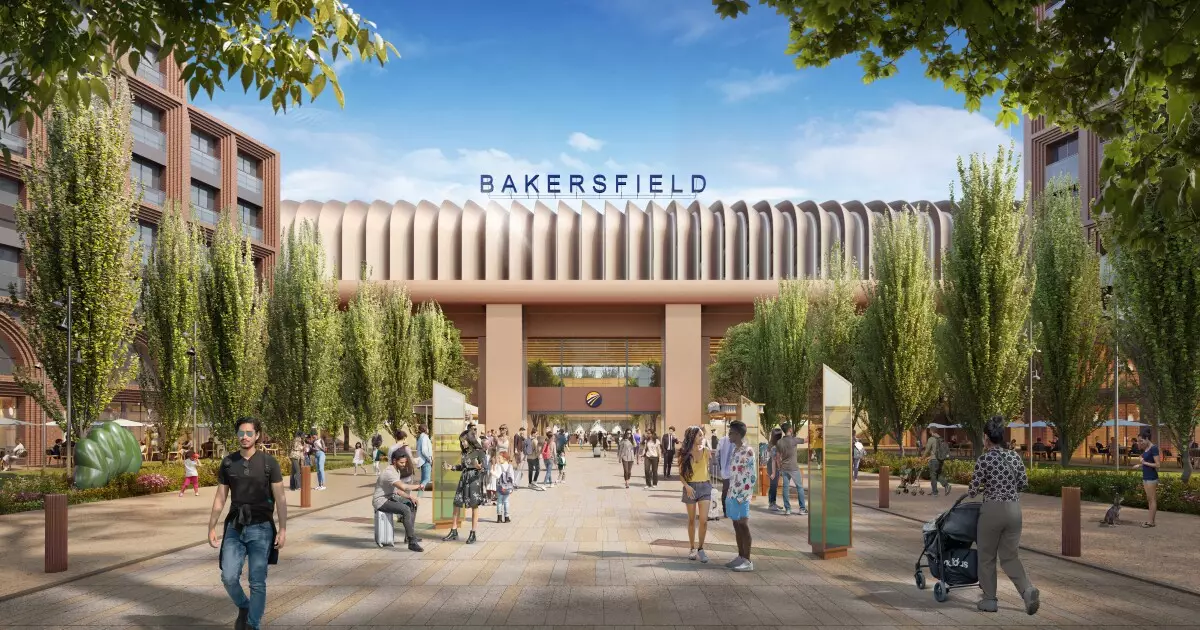California’s quest for a high-speed rail system is quickly spiraling into a financial disaster, with a staggering $7 billion gap threatening the completion of the Central Valley segment. As this multi-billion dollar project becomes increasingly bogged down in logistics and political opposition, it raises critical questions about fiscal responsibility and the leadership required to navigate complex infrastructure initiatives. What was once heralded as a transformative venture for California’s transportation network is now teetering on the edge of collapse due to mismanagement and shifting priorities.
The High-Speed Rail Authority claims to have secured approximately $7.2 billion in federal grants since 2009. However, this amount is merely a fraction of what will be required to address the current budget shortfall. With inflation pressures and uncertain federal funding looming large, there are legitimate fears that this gap will only widen in the coming months. In essence, the project has become a microcosm of larger governmental inefficiencies, revealing not just a failure of project management but also a deeper deficit in accountability within public institutions.
The Political Firestorm Surrounding the Project
President Trump’s criticisms and threats to retract federal funding only add to the climate of chaos that surrounds the rail initiative. Transportation Secretary Sean Duffy’s orders for a formal review signify a pivot towards increased scrutiny and perhaps even intervention at the federal level. This scrutiny isn’t unmerited; the program’s ballooning budget estimates—initially set at $34 billion in 2008, now soaring to between $100 billion and $128 billion—suggest a level of negligence that demands political consequences.
Rising discontent is reverberating through the halls of the California Assembly, with voices like Assemblymember Alexandra Macedo calling for a redirect of funds towards more pressing needs like wildfire prevention and water infrastructure. This growing faction of skeptics argues that the high-speed rail has morphed from an innovative public works project into a financial black hole. With the state’s rural communities facing real crises, should we really be pouring money into something that is “over budget and behind schedule”?
Challenges in Leadership and Planning
The leadership at the High-Speed Rail Authority has come under intense scrutiny, particularly with Ian Choudri stepping in as CEO just ahead of a fiscal cliff. His mandate appears ambitious: explore cost efficiencies and public-private partnerships to alleviate the financial burden. However, skepticism abounds regarding whether leadership changes can genuinely address the systemic issues plaguing the project. The authority’s recent project update report was criticized for lacking substantive detail, merely a placeholder that skirts accountability and makes one question whether this project has a coherent path forward.
Assemblymember Steve Bennett’s comments on the report add to the picture of an organization scrambling under the weight of its own ambitions. As lawmakers pen the fiscal 2025-26 budget—a deadline looming before the authority’s next significant report in August—one must wonder how any rational budgeting process can effectively allocate resources to a project that lacks clear oversight or a definitive financial strategy.
The Road Ahead: A Cautionary Tale
California’s high-speed rail initiative serves not just as an infrastructure project but as a cautionary tale for ambitious governmental undertakings. When cost projections can be effectively dismissed and accountability appears evasive, the risk grows that taxpayers will find themselves on the hook for serious fiscal miscalculation. As the state grapples with its wildfires and water crises, the juxtaposition of priorities becomes glaringly apparent.
Reverting back to the project itself, one must ask: why should Californians continue investing in a program that stalled and stumbled right from its inception? Discontent is mounting not only among taxpayers but also across the political spectrum. High-speed rail could have represented the epitome of modern transit, yet due to mismanagement and lack of foresight, it’s increasingly perceived as yet another government folly—a legacy we can ill afford.


Leave a Reply